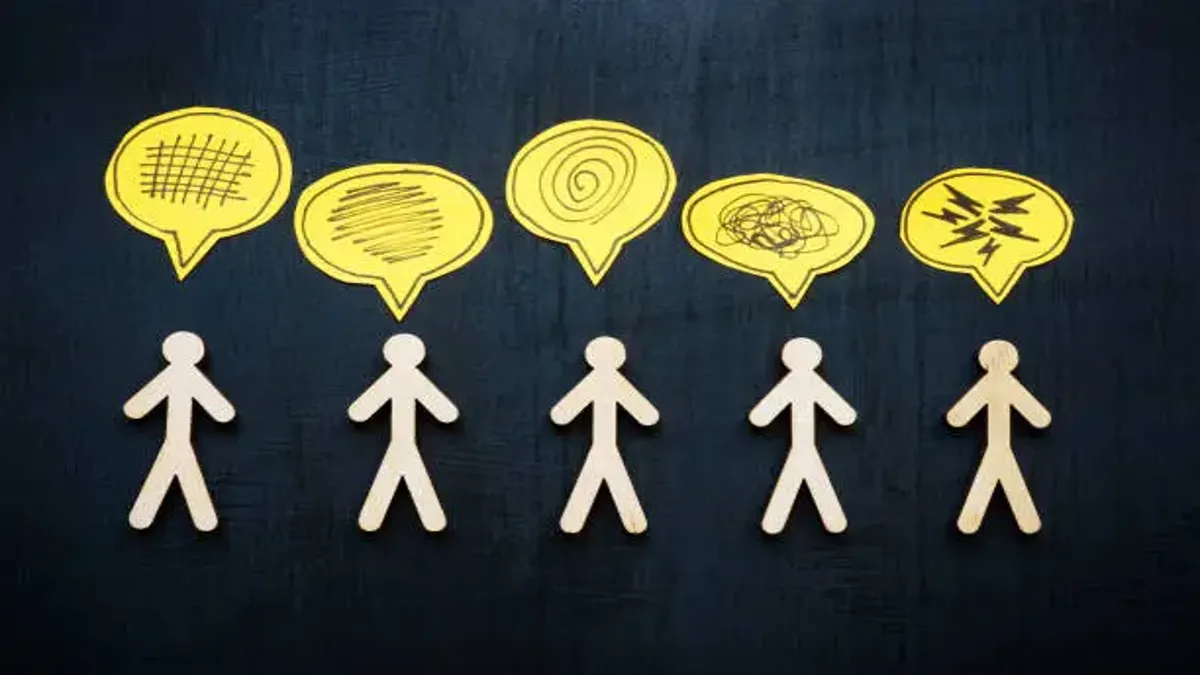In a world where words shape both conflict and connection, the term hostilement carries a resonance that transcends language. Within the first hundred words, its essence becomes clear: it is more than an adverb—it is a mirror of human emotion. Derived from the French “hostilement,” meaning “in a hostile manner,” the word encapsulates the tone, intention, and rhythm of confrontation. It defines the way aggression is expressed, the cadence of anger, and the vocabulary of resistance. Whether used in literature, psychology, or diplomacy, hostilement reflects how hostility evolves—from reaction to rhetoric, from instinct to expression. This article traces the term’s linguistic origins, cultural contexts, and emotional implications, revealing how a single word can encapsulate the complexity of confrontation in modern human interaction.
The Linguistic Roots of Hostilement
The word hostilement originates from the French adjective hostile and the suffix -ment, which transforms it into an adverb. Etymologically, it draws from the Latin hostilis (enemy-like), a derivative of hostis, meaning “stranger” or “enemy.” This evolution mirrors humanity’s historical relationship with conflict—where hostility once meant the presence of the “other.” The transformation of hostilis into hostilement illustrates language’s journey from the battlefield to the psyche, where enmity shifted from physical confrontation to emotional and verbal tension. The French form entered English usage sporadically in the nineteenth century through translation and philosophy, where it was preserved as a nuanced descriptor of manner rather than intent.
Semantic Evolution and Cross-Cultural Usage
Across languages, hostilement occupies an intriguing linguistic niche. In French, it functions as an adverb describing actions performed with antagonism or cold opposition. In English, it is occasionally used to evoke academic or literary precision, maintaining its foreign nuance. The term’s endurance lies in its adaptability—it describes both interpersonal aggression and institutional rigidity. A diplomat might speak hostilement in policy, a critic might write hostilement in prose, and an artist might paint hostilement in color. Its versatility reflects how hostility manifests not just in words, but in tones, movements, and systems.
| Language | Equivalent Term | Common Usage Context |
|---|---|---|
| French | hostilement | Behavior, tone, or action done with hostility |
| English | hostilely (rare) / hostile manner | Political and emotional description |
| Spanish | hostilmente | Psychological, military, and social discourse |
| German | feindselig | Cultural analysis, literature, interpersonal dynamics |
The Psychology of Hostility
Hostility is not simply an act—it is an emotion layered with fear, pride, and self-protection. In psychological terms, acting hostilement means expressing defensiveness disguised as aggression. It is often linked with the fight component of the fight-or-flight response, rooted in evolutionary biology. Modern psychology interprets hostile behavior as a combination of frustration and perceived threat, often triggered by unmet expectations or injustice. Studies show that sustained hostility correlates with stress, hypertension, and interpersonal conflict. When one behaves hostilement, it is rarely about the surface issue; rather, it signals deeper emotional misalignment.
Cultural Manifestations of Hostility
Different societies express hostility through distinct codes. In Western cultures, it often appears verbally—through sarcasm, critique, or ideological opposition. In collectivist societies, hostility can be indirect, masked by politeness but expressed through exclusion or silence. The French word hostilement captures both dimensions: explicit and subtle. Its tone is cerebral, not violent; it speaks of tension rather than destruction. For example, in diplomatic discourse, a nation might respond hostilement—not through war, but through withdrawal, sanctions, or rhetoric. The word therefore bridges the emotional and political realms, where hostility becomes an instrument of influence.
The Role of Hostilement in Literature
Writers throughout history have used hostility not merely as conflict but as atmosphere. In nineteenth-century realism, authors such as Flaubert and Zola embedded hostilement within dialogues that mirrored social tension. The word evokes distance, disdain, or moral opposition. In modern literature, hostilement becomes more psychological—depicting alienation and emotional warfare rather than physical aggression. A character may not speak, but their silence resonates hostilement. The term, therefore, serves as a linguistic device for describing invisible tension—what Sartre might call “the friction of existence.”
Linguistic and Emotional Symmetry
The structure of hostilement itself reflects its meaning: it begins with hosti- (conflict) and ends with -ment (a state or condition). The form implies an action sustained through intention—a lingering state of hostility rather than a momentary outburst. This dual nature makes it linguistically symmetrical with adverbs like doucement (gently) or violemment (violently), forming a semantic spectrum between tenderness and aggression. This symmetry underscores that language is a reflection of emotional polarity: every act of hostility has its opposite in empathy.
The Sociology of Hostility
Sociologically, hostilement extends beyond individual behavior to collective identity. Nations, political groups, and social movements express hostility structurally—through opposition, competition, or policy. Acting hostilement becomes a mode of defense against perceived domination. In today’s polarized societies, digital spaces amplify this phenomenon. Online debates unfold hostilement—where anonymity fuels aggression, and disagreement becomes warfare. Sociologists identify this as “performative hostility,” where hostility becomes both spectacle and self-expression. The concept reveals how modern communication has normalized antagonism as a language of belonging.
| Social Domain | Example of Hostile Expression | Resulting Dynamics |
|---|---|---|
| Politics | Ideological polarization, attack ads | Division and distrust |
| Media | Outrage-driven journalism | Emotional fatigue among audiences |
| Workplaces | Competitive hierarchy, verbal aggression | Decline in collaboration |
| Digital Culture | Online trolling and cancel campaigns | Erosion of empathy |
The Emotional Architecture of Hostilement
Hostility is not chaos—it is architecture. It follows predictable emotional sequences: provocation, reaction, justification, and withdrawal. The word hostilement captures this rhythm. It does not describe violence; it describes the choreography of tension. In human relationships, hostilement often hides fear of vulnerability. Psychologists describe this as defensive hostility, a mechanism to preserve ego boundaries. In contrast, strategic hostility—used by negotiators or activists—serves to assert moral power. Thus, hostilement becomes both a symptom and a strategy, reflecting how humans navigate hierarchy and dignity.
Hostility in Communication and Language
Communication scholars emphasize tone as the core of hostilement. The same words may sound hostile or neutral depending on inflection. The term thus bridges linguistics and pragmatics—the study of how meaning shifts through delivery. Digital communication complicates this further: text lacks tone, making messages easier to misinterpret as hostile. In emails, posts, or public statements, perceived hostility often reflects projection rather than intent. “We read tone into silence,” noted one language theorist. “And sometimes, that imagined hostility shapes our reality.” In this sense, hostilement reveals as much about perception as about speech.
Artistic Representations of Hostility
Artists have long grappled with hostility’s dual nature—as destruction and as creation. In painting, Goya’s Disasters of War expressed hostility not through violence but through empathy for human suffering. In theater, Ibsen and Brecht used dialogue hostilement—to provoke audiences into awareness. In film, directors translate emotional hostility into lighting, pacing, and silence. Even music can be hostilement: the dissonant chords of Stravinsky’s Rite of Spring or the lyrical tension in Billie Eilish’s minimalist compositions. Hostility, rendered through art, transforms from a force of division into an instrument of revelation.
Philosophical Dimensions: Freedom and Hostility
Philosophically, hostility is intertwined with freedom. Existentialist thinkers argue that hostility arises when autonomy is threatened. To act hostilement is, paradoxically, to assert individuality. Jean-Paul Sartre described human relations as a constant negotiation between self and other—“hell is other people,” he wrote, implying that hostility is inherent in self-awareness. Similarly, Hegel’s dialectic of master and slave positions hostility as the engine of recognition; without conflict, identity stagnates. From this lens, hostilement is not inherently negative—it is the friction that defines consciousness.
The Language of Resistance
In social activism and political discourse, hostility often becomes moral resistance. Acting hostilement toward injustice can signify courage. History’s reformers—from abolitionists to suffragettes—were labeled hostile precisely because they disrupted comfort. Here, the adverb assumes dignity: to behave hostilement in the face of oppression is to speak truth without apology. This linguistic transformation redefines hostility as engagement rather than enmity. It demonstrates how words evolve with context, acquiring moral resonance where once they carried only condemnation.
Key Insights into the Dual Nature of Hostilement:
- It can signify either aggression or courage, depending on intent.
- It functions both as defense and declaration.
- Its tone defines its morality—anger without cruelty becomes assertiveness.
- It reveals that hostility is not absence of empathy but often its misdirection.
- It underscores how language humanizes even our most volatile emotions.
Hostility and Ethics in the Modern World
In the 21st century, hostilement has taken new forms through technology, politics, and culture. Ethical questions arise around when hostility becomes justified. Is digital activism, which “calls out” wrongdoing, an act of justice or hostility? Is political dissent inherently hostilement? Ethical theorists argue that intent and proportion determine morality. To act hostilement for truth is protest; to act hostilement for dominance is harm. This fine line defines modern ethics—where anger, once taboo, now fuels awareness but risks becoming its own ideology.
Voices on Hostility
“Hostility is not evil—it is unrefined passion,” said one modern philosopher.
“Every argument has two halves: what is said, and what is defended,” noted a linguist analyzing conflict rhetoric.
A psychologist observed, “Hostility begins where listening ends.”
And a diplomat summarized it simply: “There is no peace without the memory of hostility, because peace is how we learn to live beyond it.”
Comparative Reflections: Hostility in Society and the Self
To live hostilement is to oscillate between fear and expression. At a societal level, it builds barriers; at a personal level, it protects boundaries. This paradox defines human interaction. When understood consciously, hostility becomes awareness—an acknowledgment of friction as part of connection. Cultivating this awareness transforms conflict into growth. Thus, the study of hostilement extends beyond linguistics or emotion; it becomes a philosophy of coexistence, recognizing that to speak hostilement is not always to destroy, but sometimes to assert truth in an unhearing world.
The Future of the Word Hostilement
As global culture becomes increasingly digital and multilingual, hostilement may evolve further. Its cross-linguistic form allows it to migrate easily between French, English, and Spanish, carrying its emotional weight intact. In future discourse, it may describe not only acts of hostility but atmospheres of division—political climates, media ecosystems, or even algorithmic bias. The word’s adaptability ensures its survival in an era where tone defines truth. It may continue to serve as both warning and reflection—a linguistic reminder that humanity’s greatest battles are often fought in language before they reach reality.
Conclusion: From Hostility to Understanding
Ultimately, hostilement is not merely a word—it is a mirror to the human condition. It captures how individuals and societies channel conflict, revealing both fragility and strength. To act hostilement is to engage passionately, sometimes destructively, often sincerely. But beneath its aggression lies a yearning for recognition—for the other to hear, to understand, to acknowledge. The journey from hostility to harmony begins not by silencing tension, but by understanding it. Language like hostilement reminds us that every act of confrontation holds the potential for connection—if we learn to listen between the words.
FAQs
1. What does “hostilement” mean?
Hostilement is a French adverb meaning “in a hostile manner.” It describes behavior, tone, or action marked by opposition or aggression.
2. Is “hostilement” used in English?
Occasionally. It appears in academic or literary writing to preserve its French nuance, often to describe subtle or intellectual forms of hostility.
3. How is hostility different from anger?
Anger is an emotion; hostility is the behavior or attitude that expresses that anger. Acting hostilement implies directed, sustained antagonism.
4. Can hostility ever be positive?
Yes. Hostility directed against injustice or oppression can serve as moral resistance. Intent and proportionality determine its ethical meaning.
5. Why is “hostilement” relevant today?
In an age of polarization and digital communication, hostilement encapsulates how tone and perception shape modern discourse and emotional connection.

